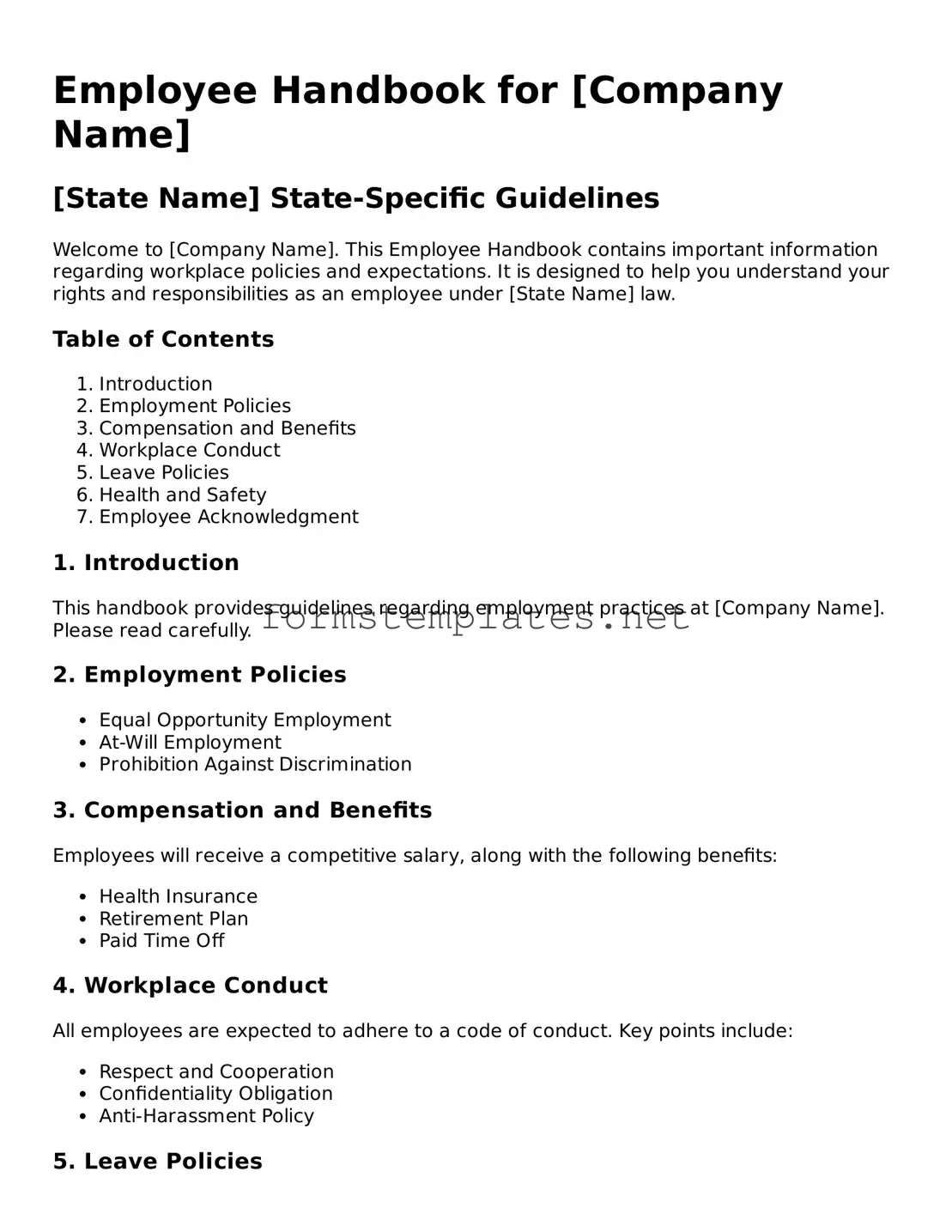Employee Handbook for [Company Name]
[State Name] State-Specific Guidelines
Welcome to [Company Name]. This Employee Handbook contains important information regarding workplace policies and expectations. It is designed to help you understand your rights and responsibilities as an employee under [State Name] law.
Table of Contents
- Introduction
- Employment Policies
- Compensation and Benefits
- Workplace Conduct
- Leave Policies
- Health and Safety
- Employee Acknowledgment
1. Introduction
This handbook provides guidelines regarding employment practices at [Company Name]. Please read carefully.
2. Employment Policies
- Equal Opportunity Employment
- At-Will Employment
- Prohibition Against Discrimination
3. Compensation and Benefits
Employees will receive a competitive salary, along with the following benefits:
- Health Insurance
- Retirement Plan
- Paid Time Off
4. Workplace Conduct
All employees are expected to adhere to a code of conduct. Key points include:
- Respect and Cooperation
- Confidentiality Obligation
- Anti-Harassment Policy
5. Leave Policies
[Company Name] recognizes the need for time away from work. Leave options available are:
- Annual Leave
- Family and Medical Leave
- Jury Duty Leave
6. Health and Safety
Your health and safety are priorities. Please adhere to the following safety protocols:
- Report Unsafe Conditions
- Follow Emergency Procedures
- Participate in Safety Training
7. Employee Acknowledgment
All employees are required to sign an acknowledgment form confirming they have read and understood the handbook. Please complete the form below:
I, [Employee Name], acknowledge that I have received and read the Employee Handbook of [Company Name].
Employee Signature: ___________________________ Date: ___________
If you have any questions, please feel free to reach out to [HR Contact Information]. Thank you for being part of [Company Name].
